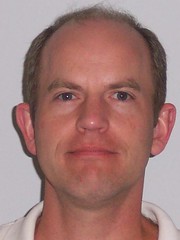Light flashes from the 21st European Photovoltaic Solar Energy Conference and Exhibition
 Dresden is awash in the brilliance of 2,500 Photovoltaic experts from 93 countries. In the opening session, there were predictions and insights from industry leaders and German politicians. I will only cover a few highlights.
Dresden is awash in the brilliance of 2,500 Photovoltaic experts from 93 countries. In the opening session, there were predictions and insights from industry leaders and German politicians. I will only cover a few highlights.Although new silicon feedstocks are coming online in 2008, Dr. Winfried Hoffman, Schott Solar, predicted silicon based solar panels would not resume decreasing in price along the traditional minus 5% per Watt pro year learning curve until 2010.
Setsuo Iuchi from Japan’s Policy Planning Director of Energy Conservation
and Renewable Energy Department of METI predicted PV solar pricing per watt over the next 24 years: 30 yen/watt in 2007(silicon), 23 yen/watt in 2010 (amorphous-silicon), 14 yen/watt in 2020 (not silicon or compound semiconductors), and 7 yen/watt by 2030.
Hermann Scheer, Member of the German Parliament, tipped refinements to the groundbreaking German Renewable Energy Feed-In-Tariff Law (EEG) he authored. Dr. Scheer believes that centralized power stations as the backbone reserve of renewable energy technologies need a paradigm shift to overcome the remaining counterarguments to renewable energy. First, he advocates financial incentives to encourage decentralized energy storage; it was unclear if existing battery technologies would be included. Second, Dr. Scheer would like to legislate “time windows” to electricity rates so peak power generated at peak usage hours by solar electric systems receive the highest feed in tariff rates. Dr. Scheer’s latest book, “Energy Autonomy. A New Policy for Renewable Energy”, will be available in english later this year.
Dr. Richard Swanson, founder and CEO of SunPower, was awarded the 14th Becquerel Prize.
At the afternoon press conference, I asked the Opening Session panel about the possibility of an oversupply of solar panels after 2008 as all the silicon feedstock and solar cell and module production capacity, both silicon and thin film, comes online. The possibility was dismissed out of hand. While my question may have been misunderstood, even the fastest growing markets have periods of slower growth and imbalances in supply and demand. Right now, the industry is obsessed with the silicon feedstock undersupply situation and its constraint on solar module production. Much like other high growth markets, DRAM semiconductors for example, there is a risk that solar cell and module production quickly switches to an oversupply versus demand situation in the 2009 to 2010 timeframe. I will consider doing a follow up survey of announced silicon feedstock production expansions and solar cell and module production capacity to develop a quantitative basis for this assertion.
Two developments could prevent an oversupply situation in the next few years.
1) Silicon solar modules fall below $2.50 per Watt to achieve rough grid parity
2) The United States passes sweeping Renewable Energy legislation similar to the German EEG model. Unless this happens, the US market will be held captive by state solar electric rebate programs that are inherently capped and subject to politics at each refunding.
Also, this conference is a who’s who of the photovoltaic community. Care is recommended when fighting the crowd of 2,500 reaching for that coffee during the rest breaks. That person you just elbowed might be a CEO or a prominent PV research professor.











1 Comments:
Gunther -- The reason that fears of oversupply are dismissed out of hand is because Japan can consume at least 5GW of solar panels per year at current prices. (Take the 1 million new houses built each year. Stick 3KW on top of each house. Multiply by 3 to account for the industrial and commercial sectors. Then discount back to 5GW because that's the MITI target.)
Meanwhile, there is significant continued demand at current prices throughout the rest of the world. And this demand is much higher than what the industry will produce in 2009 and 2010.
Finally, if there is an imbalance where supply exceeds demand, prices drop. And small decreases in price dramatically increase demand.
Your concept of Grid parity is not important for the next 10 years. Remember that Solar panels supply well less than 1% of the electricity used by the Grid. Thus, the PV market in 2010 does not compete with average grid electric prices. It competes with, at most, the high end 4% of grid supplied electricity where the sun shines brightest, populations grow fastest, and natural gas supplies are most volatile.
Also, you don't need the U.S. federal government to endorse and subsidize solar. Society realizes that it is reasonable to subsidize solar for a wide variety of reasons. One of the most important is that it makes sense to spend up to $1.50/watt on PV instead of spending the same amount on transmission lines and distribution systems.
It makes more sense to subsidize solar in areas of the U.S. where the population is growing rapidly. It does not make sense for a country as large and diverse as the U.S. to adopt the policies of much smaller Germany. Germany imports 80% of its natural gas (see the CIA world factbook) and Russia is rattling the sabre of Gazprom. The US imports 14% of its natural gas -- mostly from Canada.
Simple economics strongly suggests that the U.S. will not endorse a national policy to promote solar PV. The same simple economics suggests that states where PV makes sense will continue to strongly support PV.
Post a Comment
<< Home